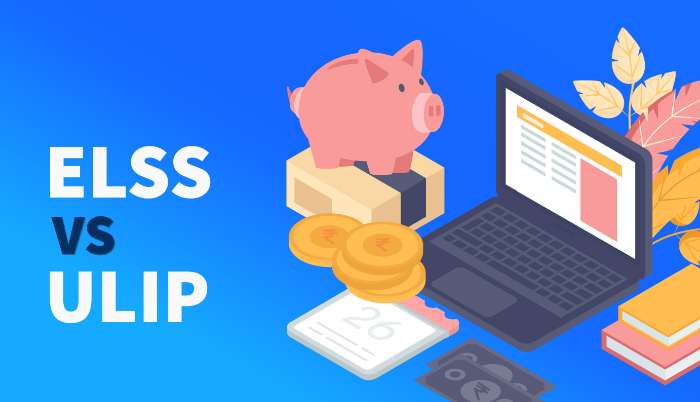Making appropriate investments during your working age will allow you and your family to reap its benefits in the future. Today, we have several investment plans to choose from, based on our affordability and needs. Among the many available in the market, people are often confused when buying Unit Linked Insurance Plans (ULIPs) and Equity Linked Savings Scheme (ELSS).
Besides, ULIP vs ELSS has been an on-going debate for a long time. But understanding the difference between the two will allow you to make the right investment choice. The following table depicts the same. Here, take a look!
| Unit Linked Insurance Plans (ULIPs) | Equity Linked Savings Scheme (ELSS) | |
| Primary Objective of the Policy | ULIPs provide dual benefits – life insurance cover and investment benefits. | ELSS provides the benefits of diversified equity investments that are managed by experts. |
| Returns | The ULIP returns are based on the funds you invest in – equity, debt, or hybrid. | ELSS is a market-linked scheme. You can expect approx. returns of 12-14%. |
| Lock-in Period | ULIPs come with a mandatory five-year lock-in period. | ELSS comes with a mandatory three-year lock-in period. |
| Tax Benefits | The premiums paid towards the policy can be claimed for tax deduction under Section 80C of the old income tax structure.
However, the returns can be taxable. |
LTCG has been taxed at 10% above Rs. 1 Lakh. |
| Liquidity | Low | High |
| Fees and Charges | Some applicable ULIP charges include premium allocation charges, policy administration charges, mortality charges, etc. | Some application ELSS charges include the fund management charges and exit load charges. |
| Regulator | ULIPs are managed by the Insurance Regulatory and Development Authority of India (IRDAI) | ELSS is managed by the Security and Exchange Board of India (SEIB). |
| Risk | Since the investment component of ULIPs is market-linked, the risk involved is relatively high. | Similar to ULIPs, ELSS is market-linked and the risk involved is equally high. |
Things to Know About ULIPs in India
What sets ULIP apart from traditional schemes is that the policy provides the benefits of life insurance coverage and market-linked investments. A part of the premium paid towards the policy is used for life insurance coverage; whereas the remaining is used to invest in funds of your choice. Besides,
- At the start, the ULIP premium is used for meeting the policy expenses and your life insurance-related needs.
- Further, the premium amount is divided between investments of your choice and life insurance cover.
- Moreover, a part of the premium also goes towards ULIP charges such as fund management charges, administration charges, premium allocation charges, mortality charges.
Things to Know About ELSS in India
ELSS primarily focuses on investing in companies with different market capitalisation. You invest a lump sum amount or SIP to gain its benefits. Based on your investment amount and the market conditions, the returns can range between 15-20% annually. Besides,
- The returns generated through the scheme are taxable as per the recent budget announcements.
- The scheme comes with a mandatory lock-in period of three years. However, you can continue the investment even after the lock-in period ends to avail its long-term benefits.
- ELSS is an ideal option for those looking for a short-term lock-in period with reasonable returns.



